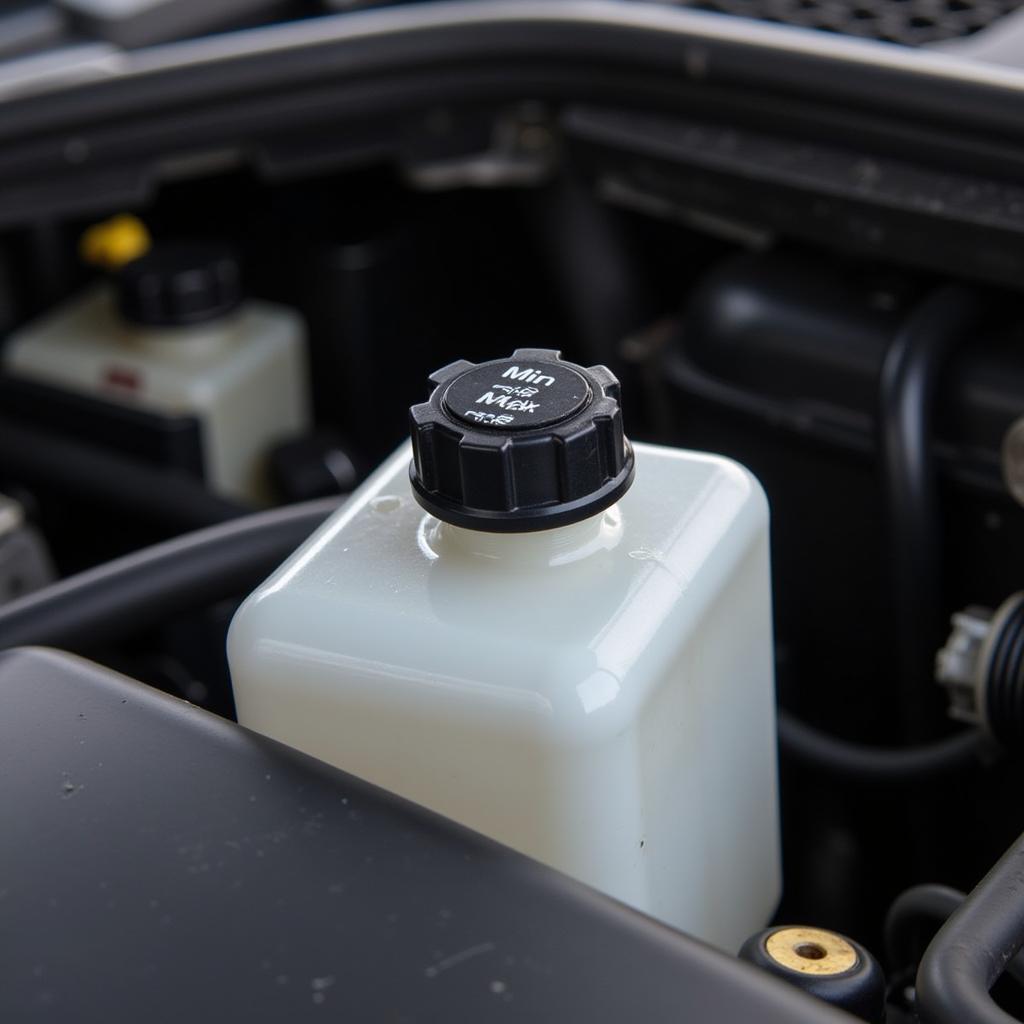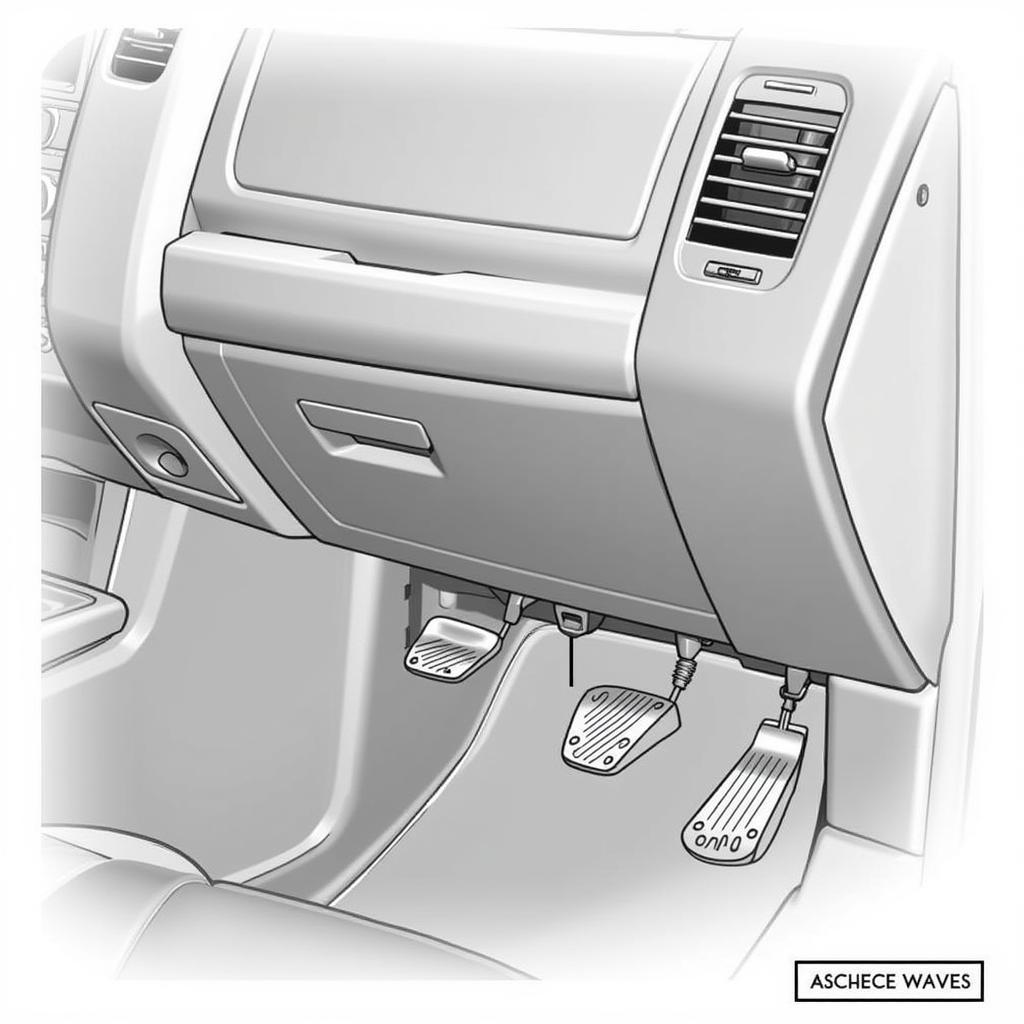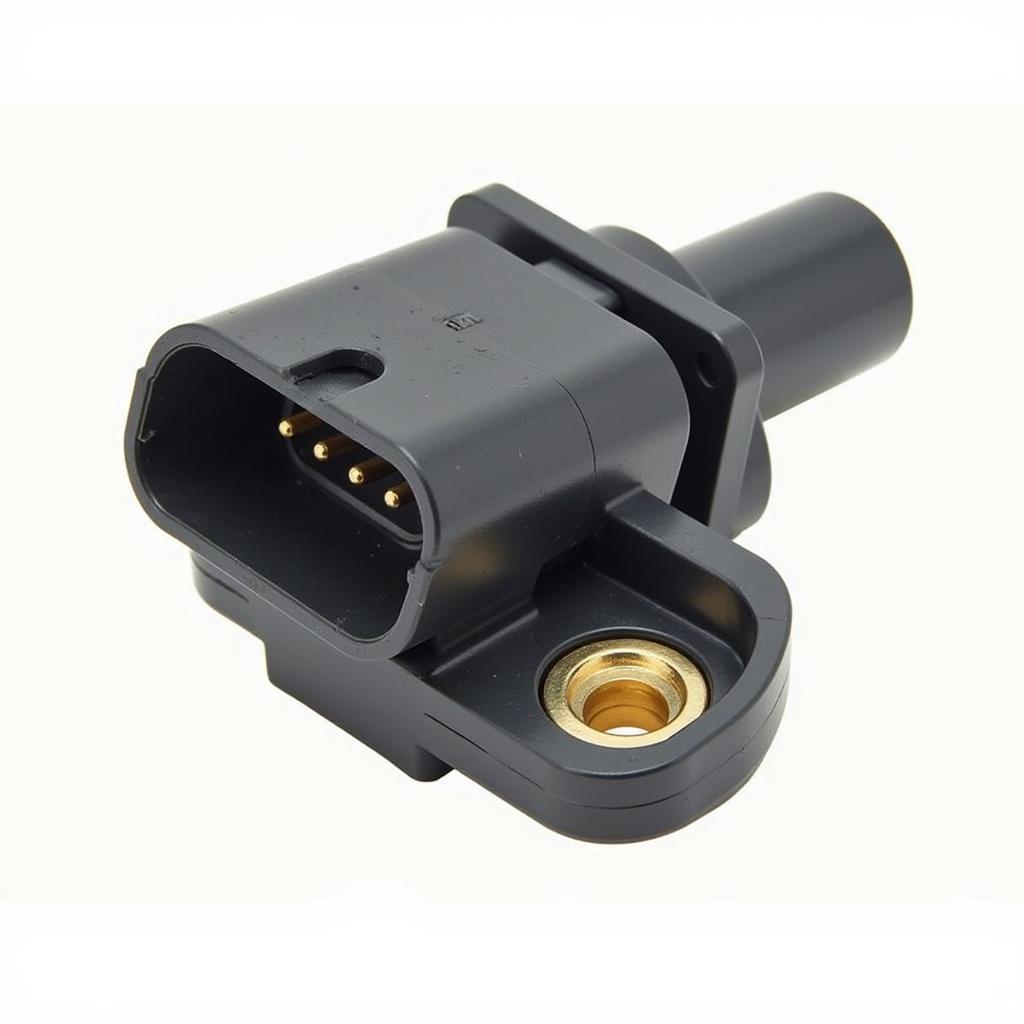The brake warning light on your Ford F150 dashboard is a crucial safety feature, designed to alert you to potential issues within your braking system. When this light illuminates, it means your truck requires immediate attention. While a simple issue like a disengaged parking brake can trigger the light, more serious problems with your brake fluid, ABS system, or brake components could be at fault.
This comprehensive guide will walk you through the common causes of a persistent brake warning light in your Ford F150 and provide you with actionable solutions to address them.
Understanding Your Ford F150’s Brake Warning System
Before delving into the potential problems, it’s essential to understand how your Ford F150’s brake warning system operates. The system relies on several key components:
- Brake Fluid Level Sensor: This sensor monitors the brake fluid level in the master cylinder. If the fluid drops below a safe level, the sensor triggers the warning light.
- Parking Brake Switch: Engaging the parking brake activates this switch, illuminating the warning light as a reminder.
- Anti-lock Braking System (ABS): Your F150’s ABS has its own dedicated control module and sensors. Any faults within this system can trigger the brake warning light.
Common Causes of a Ford F150 Brake Warning Light Staying On
Several factors can cause the brake warning light to stay on in your Ford F150. Here are some of the most prevalent:
1. Low Brake Fluid
One of the most common culprits is low brake fluid. Brake fluid is the lifeblood of your braking system, transmitting the force from your foot on the brake pedal to the calipers, which then apply pressure to the brake pads, stopping your truck.
Possible Causes of Low Brake Fluid:
- Worn Brake Pads: As brake pads wear down, the brake calipers need more fluid to function correctly.
- Brake Fluid Leak: A leak anywhere in the braking system, from the master cylinder to the brake lines, will result in fluid loss.
Troubleshooting Low Brake Fluid:
- Check the Brake Fluid Level: Park your F150 on a level surface and locate the brake fluid reservoir under the hood. The reservoir will typically have a “min” and “max” marking.
- Add Brake Fluid: If the fluid level is low, carefully add the correct type of brake fluid (check your owner’s manual) until it reaches the “max” line.
- Inspect for Leaks: If you notice a significant drop in brake fluid level, there is likely a leak. Thoroughly examine the brake lines, hoses, and connections for any signs of fluid leakage.
 Ford F150 Brake Fluid Reservoir
Ford F150 Brake Fluid Reservoir
Expert Insight from John Miller, ASE Certified Master Technician: “Never drive your Ford F150 with low brake fluid. It’s a serious safety hazard. If you need to add fluid frequently, have a professional mechanic diagnose the issue immediately.”
2. Faulty Parking Brake Switch
A malfunctioning parking brake switch can also cause the brake warning light to stay on, even when the parking brake is fully disengaged.
Troubleshooting a Faulty Parking Brake Switch:
- Visually Inspect the Switch: Locate the parking brake switch, usually near the parking brake pedal assembly. Look for any signs of damage or loose connections.
- Test the Switch: With the ignition on and the parking brake disengaged, disconnect the electrical connector from the switch. If the warning light turns off, the switch is likely faulty and needs replacement.
 Ford F150 Parking Brake Switch Location
Ford F150 Parking Brake Switch Location
3. Worn Brake Pads
Brake pads are consumables and naturally wear down over time. When they reach a certain level of wear, the brake pad wear sensor (if equipped) will trigger the brake warning light.
Troubleshooting Worn Brake Pads:
- Listen for Noises: Worn brake pads often produce a high-pitched squealing sound when braking.
- Inspect the Brake Pads: Visually inspect the brake pads through the wheel’s spokes. If you see less than 1/4 inch of brake pad material remaining, it’s time for a replacement.
Expert Insight from Sarah Thompson, Automotive Engineer: “Regular brake inspections are essential for maintaining optimal braking performance and safety. Don’t wait for the warning light to come on before checking your brake pads.”
4. ABS Problems
Your Ford F150’s Anti-lock Braking System (ABS) plays a crucial role in preventing wheel lockup during hard braking, enhancing vehicle control. However, issues within the ABS system, such as faulty wheel speed sensors or a malfunctioning ABS module, can trigger the brake warning light.
Troubleshooting ABS Problems:
Diagnosing and repairing ABS issues typically require specialized diagnostic equipment and expertise. If you suspect an ABS problem, it’s best to consult a qualified mechanic.
 Ford F150 ABS Wheel Speed Sensor
Ford F150 ABS Wheel Speed Sensor
Conclusion
A persistent brake warning light in your Ford F150 should never be ignored. While simple fixes like topping up the brake fluid or replacing worn brake pads might resolve the issue, more complex problems may require professional attention.
Remember, maintaining your F150’s braking system is paramount for your safety and the safety of others on the road. Regular inspections, timely repairs, and proactive maintenance will ensure optimal braking performance and peace of mind.
